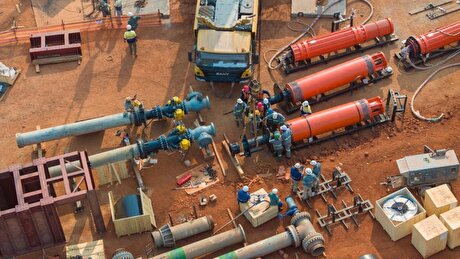
Viewpoint: MTBE, ethanol face off in Mexico

MTBE will likely continue to be the prevailing enhancer, but further expansion of private suppliers in 2020 could set up an ethanol/MTBE battle south of the border.
MTBE and ethanol are added to gasoline to lift the octane content, and allow for a more complete burn at the tailpipe. The competition between MTBE and ethanol is a familiar fight, with ethanol producers and oil refiners first locking horns over nearly two decades ago in the US. Ethanol moved ahead, with the powerful corn lobby prevailing as MTBE was phased out in 2007 after several states banned it over concerns about drinking water contamination if the product leaks from underground storage tanks.
The competition in Mexico has been fueled by concerns over how ethanol burns at the higher altitudes of many major Mexican cities. Mexico City is 7,400 ft above sea level, compared with Denver, Colorado's elevation of 5,130 ft.
Mexico's energy regulatory commission (CRE) decided in June 2017 to allow the use of a 10pc concentrate of ethanol (E10) in gasoline except for the three major cities: Mexico City, Guadalajara and Monterrey. The commission argued there was not enough information about how ethanol burned at higher altitudes and in densely populated areas.
CRE ordered a more comprehensive study from the Mexican petroleum institute (IMP), which found no significant statistical differences between emissions with cars tested using E10 concentrates against those using MTBE. The study also found that older cars issued higher emissions, regardless of the additive used.
Cheaper prices
If the battle was purely economics, ethanol would be the clear winner once infrastructure is built. Ethanol costs about 150¢/USG delivered to Mexico's east coast, while MTBE is priced around 225¢/USG fob. Economics have won out in some informal ethanol distribution enterprises, which sell ethanol for drivers to blend themselves in the tank. Formal retailers are asking the government to crack down on the practice.
Distribution is a major market force, and ethanol faces transportation constraints as it is typically blended just prior to retail distribution. Separate tanks holding ethanol and petroleum components are needed for storage, whereas MTBE can be blended at any point in the supply chain. Mexico has little existing ethanol infrastructure, and even plans for expanding conventional storage tanks have been slow to develop.
Political barriers
With ethanol being less expensive and the environmental benefits to MTBE roughly equal, the question remains what is preventing its wider use in Mexico's three biggest cities? One answer appears to be state-owned Pemex, which maintains that MTBE is a better additive for Mexico's particular conditions.
The E10 standard first allowed in the past administration would make it easier to import gasoline from the US, since having the same standard in both countries reduces the costs of importing a "boutique product" such as gasoline with MTBE, which is prohibited in the US.
The administration of President Andres Manuel Lopez Obrador has called to reduce the country's fuel imports from the US. But the government is also on an austerity drive and wants to lower energy prices — which could again favor ethanol if there's an investment in blending infrastructure.
As it continues to evolve, the Mexican octane market will remain dynamic.
On average, Mexico takes about two thirds of US-produced MTBE, an important export market for the remaining makers. Heading into 2020, Gulf coast supply of MTBE has tightened, with a third of the market offline for about the first two months for a major turnaround at Huntsman's Port Neches, Texas, plant. That tightness could spark a wider opening for ethanol.
By Steven McGinn


Trump weighs using $2 billion in CHIPS Act funding for critical minerals

Codelco cuts 2025 copper forecast after El Teniente mine collapse

Electra converts debt, launches $30M raise to jumpstart stalled cobalt refinery

Abcourt readies Sleeping Giant mill to pour first gold since 2014

Barrick’s Reko Diq in line for $410M ADB backing

Nevada army depot to serve as base for first US strategic minerals stockpile

Tailings could meet much of US critical mineral demand – study

Viridis unveils 200Mt initial reserve for Brazil rare earth project

SQM boosts lithium supply plans as prices flick higher

Energy Fuels soars on Vulcan Elements partnership

Northern Dynasty sticks to proposal in battle to lift Pebble mine veto

Giustra-backed mining firm teams up with informal miners in Colombia

Critical Metals signs agreement to supply rare earth to US government-funded facility

China extends rare earth controls to imported material

Galan Lithium proceeds with $13M financing for Argentina project

Silver price touches $39 as market weighs rate cut outlook

First Quantum drops plan to sell stakes in Zambia copper mines

Ivanhoe advances Kamoa dewatering plan, plans forecasts

Texas factory gives Chinese copper firm an edge in tariff war

Energy Fuels soars on Vulcan Elements partnership

Northern Dynasty sticks to proposal in battle to lift Pebble mine veto

Giustra-backed mining firm teams up with informal miners in Colombia

Critical Metals signs agreement to supply rare earth to US government-funded facility

China extends rare earth controls to imported material

Galan Lithium proceeds with $13M financing for Argentina project

Silver price touches $39 as market weighs rate cut outlook

First Quantum drops plan to sell stakes in Zambia copper mines

Ivanhoe advances Kamoa dewatering plan, plans forecasts

















